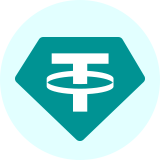The tokenization of real-world assets (RWAs) is rapidly gaining traction, offering new ways to invest, trade, and own everything from real estate to government bonds. Predictions in a Tren Finance report suggest that the RWA sector could experience explosive growth, increasing by 50x and reaching between $4 trillion and $30 trillion by 2030. This transformation is expected to redefine traditional financial markets, introducing faster, cheaper, and more transparent processes through blockchain technology.
According to a Tren Finance report, “The integration of traditional finance with blockchain technology is not just a trend but a fundamental shift towards a more accessible, efficient, and dynamic financial ecosystem.”
Quick Take
-
Tren Finance projects that the RWA tokenization market could reach $10 trillion by 2030, representing a more than 54x increase from its current valuation of $185 billion. The report highlights how sectors like real estate, securities, and commodities are already leading this charge.
-
Stablecoins continue to play a dominant role, accounting for over $170 billion of the total RWA market. In comparison, tokenized securities and treasuries are valued at just $2.2 billion, indicating vast growth potential in financial instruments.
-
Blockchain-powered RWAs are attracting major financial players. Tokenized government bonds and private equity funds have already begun migrating on-chain, promising more accessible and liquid markets for traditional assets.
-
RWAs eliminate the need for third-party intermediaries, speeding up transactions and reducing costs. With blockchain-enabled fractional ownership, investors can now buy shares in real estate properties or fine art for as little as $50.
Current State of the RWA Sector: Nearly $200B in Value
Source: Tren Finance
The RWA tokenization movement is in its early stages but gaining momentum. Tren Finance reports that stablecoins dominate the current $185 billion market, while tokenized treasuries and securities lag behind with only $2.2 billion on-chain.
The technology is already unlocking new markets. Government securities, which were previously limited to large institutions, are now accessible to smaller investors via tokenization. The BlackRock USD Institutional Digital Liquidity Fund (BUIDL), launched in March 2024, has accumulated $514 million in assets on the Ethereum blockchain.
Read more: The Rise of Real World Asset Tokenization (RWA): Unlocking Asset Liquidity
Fractional Ownership and Tokenized Markets Are Transforming Finance
Source: Tren Finance
RWAs bring unparalleled flexibility to investment. Tokenized assets allow fractional ownership, giving investors access to traditionally exclusive markets. For example, instead of needing millions to buy real estate, blockchain enables purchasing a fractional share of the property, making high-value investments more accessible.
The Tren Finance report states, “The tokenization of real-world assets unlocks liquidity and transparency in traditionally illiquid markets. Investors can now trade fractional shares of fine art, commercial properties, and carbon credits across blockchain platforms.”
Additionally, private credit markets are also joining the blockchain revolution. Tokenization makes traditionally illiquid loans more tradable and accessible to retail investors.
Read more: Top 5 Crypto Projects Tokenizing Real-world Assets (RWAs) in 2024
Stablecoins and Treasuries are Leading RWA Adoption
Source: Tren Finance
Although tokenized government securities only account for $2.2 billion today, this is just the beginning. Projects like Ondo Finance and Franklin Templeton have issued tokenized U.S. Treasury-backed products. BlackRock’s BUIDL fund recently hit $514 million in assets, highlighting growing institutional interest.
Source: Tren Finance
Meanwhile, stablecoins continue to drive most of the RWA activity. With $170 billion worth of stablecoins circulating in 2024, they represent the most successful application of blockchain in traditional finance.
The report highlights how RWAs are helping DeFi innovations thrive by enhancing capital efficiency, liquidity, and composability. Christian Santagata, Product Marketing Manager at re.al, notes, “DeFi innovations have already revolutionized finance, and when combined with RWA tokenization, the possibilities are endless.”
Challenges and Future Outlook for Asset Tokenization
Despite the rapid development, challenges remain. Adoption across financial markets is still in progress, and liquidity is limited in some tokenized sectors. Additionally, regulatory frameworks are evolving, posing obstacles for broader integration. However, as blockchain technology matures, experts predict faster onboarding and market liquidity.
The Tren Finance report emphasizes that RWAs will become a "core component of the financial markets” by 2030, capturing a significant share of global markets. This shift will make investment opportunities more inclusive, efficient, and global.
Conclusion
The tokenization of real-world assets is transforming financial markets, unlocking new value and opportunities for both retail and institutional investors. With predictions suggesting that the market could grow 50x to $10 trillion or more by 2030, the Great Tokenization is well underway. Blockchain technology is enabling faster, more efficient transactions, fractional ownership, and enhanced liquidity, reshaping the way we think about investment and asset ownership. As major financial institutions and blockchain projects continue to push forward, RWAs are poised to become a cornerstone of the financial ecosystem in the years to come.















